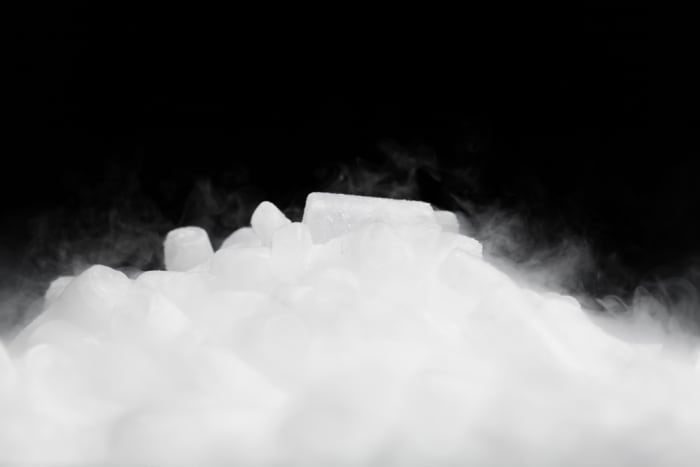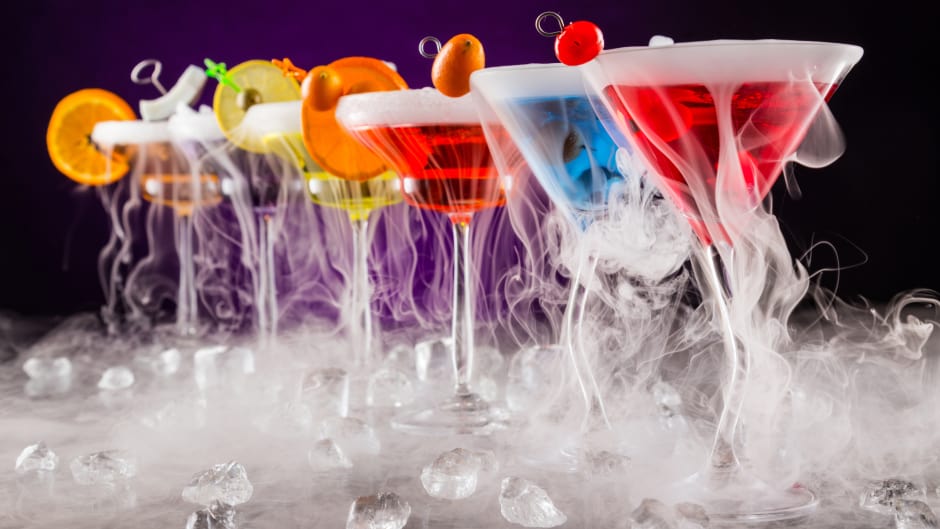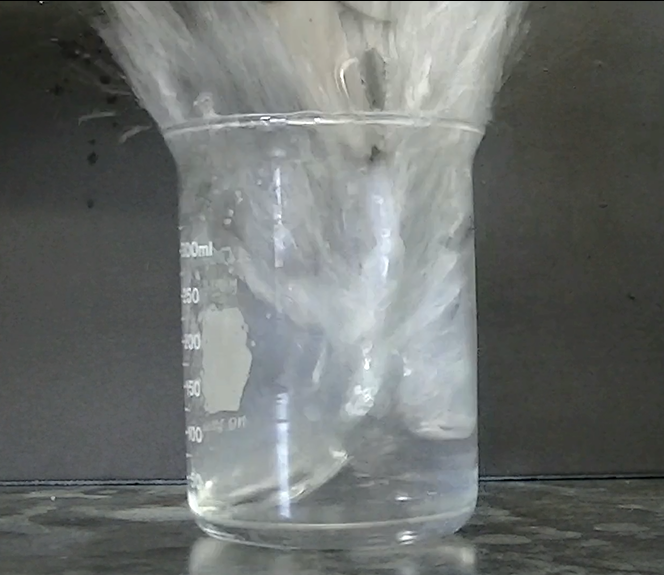Is Dry Ice Turning Into Gas a Chemical Change
For those of us interested in the water cycle sublimation is most often used to describe the process of snow and ice changing into water vapor in the air without first melting into water. The answer is A.
Which of the following states a chemical property.

. When rust forms a chemical change you cannot see the individual molecules changing into a new substance you can only see the final product which is rust. Dry ice does not really react with water very much. What is the chemical reaction between dry ice and water.
The liquid is then. When dry ice heats up it turns into a gas. You need 675 atm like what is inside a CO2 fire-extinguisher to see liquid CO2 around human temperatures.
Answer 1 of 4. The same carbon dioxide is still present it just undergoes a phase change to become a colorless gas. You can watch an ice cube melt and see how the solid is turning into a liquid.
These solids are also known as dry ice. By Ron Kurtus updated 8 February 2022 Frozen carbon dioxide CO 2 is called dry iceIt is extremely cold and has the unusual feature that when dry ice melts under normal conditions it goes directly from the solid form to the CO 2 gas. In a small space this gas can build up.
It sublimates or changes states from a solid to a gas at temperatures of -78 degrees Celsius under normal atmospheric pressure of 1 atm. Oxygen is a gas. This must be a chemical change because a new substancefogforms Actually dry ice undergoes a physical change when it sublimates from the solid to the gaseous state without first melting into a liquid.
Dry ice subliming turning from a solid straight into a gas is an example of a chemical change. What happens dry ice. It sublimates at -785C or -1093 F at earth atmospheric pressures.
Breaking a compound into its constituent elements. As dry ice melts it turns into carbon dioxide gas. The same carbon dioxide is still present it just undergoes a phase change to become a colorless gas.
Charles Thilorier is the first man to observe a solid CO 2 in 1835 when he opened a liquid CO 2 container that is given a pressure. Physical changes are easy to observe. This gas can be observed as bubbles or clouds above the solution.
When a chunk of dry ice is exposed to room temperature air it undergoes sublimation which means it changes from a solid directly into a gas without melting into a liquid first. To make dry ice carbon dioxide gas is first cooled and pressurized to turn it into a liquid according to Continental Carbonic Products Inc a dry ice manufacturer. It is sometimes referred to as cardice.
Is that a chemical or physical change. Dry Ice is the Solid State of Carbon Dioxide. Answer 1 of 3.
Take a look at this video where they make AeroGel using liquid CO2. A physical change can often to seen with the eye though there are five specific signs of a chemical change. Unlike regular ice dry ice doesnt melt into a liquid as it warms up.
Does the dry ice turn into a liquid. Leave a Reply Cancel reply. Dry ice is actually solid frozen carbon dioxide which happens to sublimate or turn to gas at a chilly -785 C -1093F.
The sublimation of dry ice into gaseous carbon dioxide is a physical change. Is that a chemical or physical change. Want to see liquid CO2.
The secret is in the chemical composition of dry ice which is carbon dioxide in solid form. Dry ice is the solid form of carbon dioxide CO2 snow-like substance that passes directly into the vapour phase without melting and leaving any residue unlike water ice. What is it called when dry.
The dry ice sublimes at -785C -109F and releases about 700 times the solid volume of. The Making Process of Dry Ice Using Carbon Dioxide. It does not undergo any chemical changes.
Because of its low temperature at normal atmospheric pressure it is useful as a coolant. When dry ice is added to water it sublimes to carbon dioxide gas rapidly because the solutions temperature is warmer than the dry ice -785 C or -1093 F. If enough carbon dioxide gas is present a person can become unconscious and in some cases die.
Put simply a chemical change changes the chemical structure of a substance and chemical bonds are broken and made whereas a physical change does not do those things. Video show the sublimation of dry ice solid carbon dioxide as well as the process of water vapor depositing onto the dry ice. Carbon dioxide has to be cooled to at least -1093 F to become a solid.
True Dry ice sublimating turning from a solid straight into a gas is an example of a chemical change. When dry ice heats up it turns into a gas. Dry ice is solid.
Juice freezing into a popsicle is an example of a physical change True or False. At room temperature carbon dioxide exists as a gasthe very gas we exhale every time we breath. Is dry ice turning into carbon dioxide a physical or chemical change.
Your email address will. If you move a CO2 extinguisher you can feel the liquid sloshing about inside. Dry ice is the solid form of carbon dioxide a molecule that is found as a gas in the air.
Dry ice will melt into a liquid under high pressure. Physical sublimation When dry ice turns directly into a gas a _____ change called _____ occurs. Chemical changes are very hard to observe.
CO 2 will form a solid without going through the liquid phase in the 51 atm pressure and about 79C temperature. This must be a chemical change because a new substancefogforms Actually dry ice undergoes a physical change when it sublimates from the solid to the gaseous state without first melting into a liquid. A very small amount of the CO2 does dissolve in water forming carbonic acid H2CO3 but this is a very weak acid.

Dry Ice In Five Different Liquids Chemical Education Xchange

Dry Ice Experiments Compilation Chemistry Youtube

What Happens If You Put Solid Carbon Dioxide In Water Dry Ice Experiment Youtube

Frozen Carbon Dioxide Dry Ice Sublimates Directly Into A Vapor U S Geological Survey

How To Make Dry Ice Mel Chemistry

How To Make Dry Ice Mel Chemistry

Solved S3 When We Expose A Block Of Dry Ice Solid Carbon Chegg Com

Simple Small Scale Dry Ice Explosions Chemical Education Xchange

No comments for "Is Dry Ice Turning Into Gas a Chemical Change"
Post a Comment